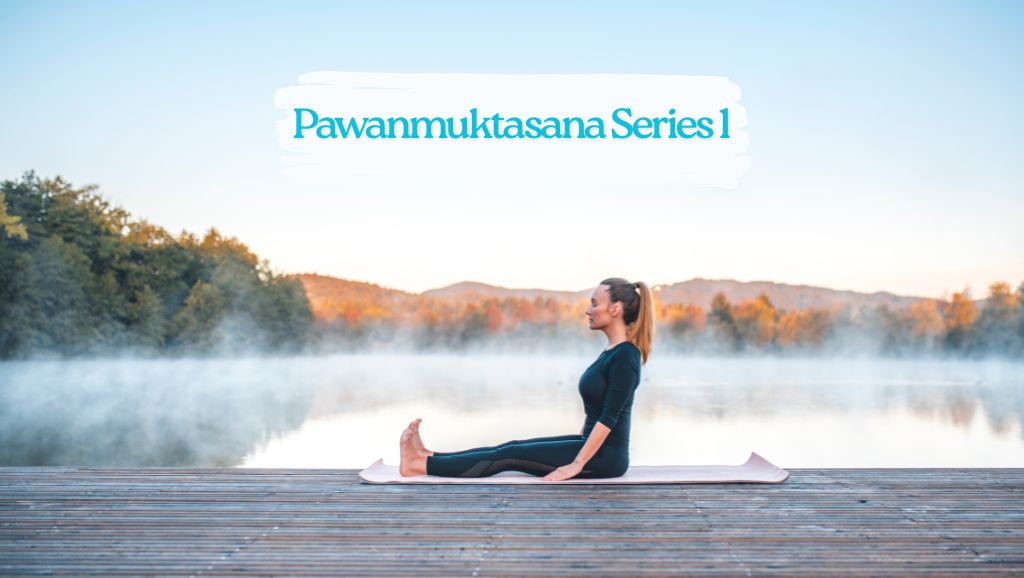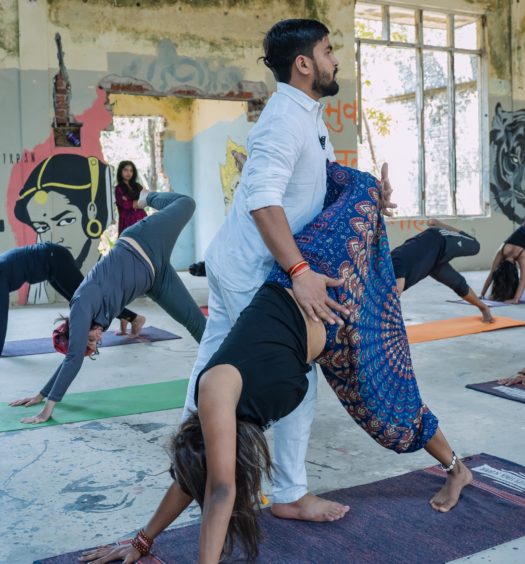So, what is the Pawanmuktasana series all about? It consists of a group of asanas or yoga poses, which have the power to impact our bodies in totality. This is an important yogic practice, wherein you get to explore and become aware of the movements that one can make and how they affect the individual. Moreover, this series, when practiced regularly, has the power to open up all the joints and also leads to calming.
Now, you can understand and learn the Pawanmuktasana series 1 in detail, as a part of the Yoga Teacher Training in India. So, before you join one, you can catch a glimpse of the things to follow.
The Pawanmuktasana Series Structure – Yoga Teacher Training in India
The series is divided into three parts, where each one focuses on a different aspect of physical, mental, and spiritual well-being. Here, we will gain some insights about Series 1, which is also called the Anti-Rheumatic group. Your main focus in this series is on stretching and loosening the joints. When passages are unblocked, the ‘Prana’ can move freely.
- Savasana
This is the first pose or asana you must start with. The practitioner will be lying down on the mat and stretching the arms and legs out. You must relax in this pose for a few breaths to calm down. Closing your eyes will also allow you to focus. And, you will also be able to breathe normally and continuously.
- Dandasana
From the Savasana, you have to move into the Dandasana, where your torso will be perpendicular to the ground. You must keep your hands by your side on the floor. Keep your eyes closed and continue to breathe for a few rounds. Always ensure to keep the spine straight.
- Padanguli Naman
You must continue to sit in Dandasana, and stretch and move the toes of both feet. Flex the toes forward and backward. Open the toes as well, creating space in between. Ensure to keep your eyes closed to retain calmness. After you are done with toes bending and flexing, move to the ankles. Rotate and then flex the ankles, repeating 10 times on each side. These movements open up the entire foot.
- Upavistha Goolf Chakra
Thereafter, you must rotate the ankles. 10 times on each foot is a good number, but you must ensure to keep the spine straight at all times. The blood flow through the lower legs will be stimulated when you practice this. Moreover, many practitioners of yoga have reported la essening of swelling.
- Goolf Ghooman
While remaining seated in the above position, bend one leg and bring the foot towards the groin. Keep the feet over the opposite thigh in a way that the ankle is free for rotation. Hold the foot with the hand on the same side as the bent leg, and hold the toes with the opposite appendage. Rotate each foot on either side, at least 10 times clockwise and anti-clockwise. Repeat with the other leg. Get trained on proper movements like these in the Yoga Teacher Training in India.
- Upavistha Janu Chakra
After you are done with ghooman, you must stretch your legs in front of you. Inhale and bend one leg, and hold it below the thighs. Contract the knee cap muscles and hold for a few seconds. Release and repeat on the other knee. This practice keeps the knee caps elastic and also prevents shocks from slips and falls.
- Upavistha Janu Naman
While continuing to sit in Dandasana, pull up one leg and bend it at the knee, with the thigh touching your chest. Straighten the leg again and place it on the floor. This affects the entire leg. If you suffer from stiffness in the knee cap, it heals. Moreover, this movement is good for those who are suffering from arthritis.
- Dandasana Knee Stretches
While continuing to be seated in the Dandasana, you must bend one of the legs and bring the thigh towards the chest. Thereafter, you must stretch the leg out at an angle of 60 degrees to the floor. The opposite leg must be placed at an angle of 20 degrees. Repeat the same movement on the other side. Thereafter, raise both legs together at an angle of 30 degrees from the floor. Hold each side for at least 10 seconds, all while keeping the spine straight.
- Janu Chakra
This is the knee crank position, in which you have to bend one of the legs and bring the thigh towards the chest. Place both hands under the thighs and interlock the fingers. Thereafter, you must raise the same foot from the ground and rotate the lower legs only. The upper remains still. Ensure to do at least 10 repetitions clockwise and anti-clockwise. Repeat on the other side, when you are done with one side. You can learn more about the intricacies of such poses in the Yoga Teacher Training in Bali.
- Ardha Titli Asana
Place one foot on the top of the opposite thigh, while sitting in the previous base position. Place the same hand on the knee of the bent leg and the opposite hand must hold the toes. Thereafter, you have to move the knee up and down, naturally. The movement happens with the pressure created by the arm holding the knee. This leads to the relaxation of the inner thighs and synchronizes the breath.
- Shroni Chakra
This is the hip rotation stage as a part of the Pawanmuktasana series 1. You can do this as a continuation of the previous asana, or start from Dandasana again, wherein you have to use the hands to rotate the knees. The main focus is to circle around the hip joint. Slowly straighten the bent leg and repeat the same thing on the opposite side.
- Purna Titli Asana
From Dandasana, you have to slowly bend both legs and bring the soles together. Keep the heels as close to the perineum as possible. Relax the inner thighs. Grasp both feet with the hands and move the knees up and down. You can breathe normally throughout this movement.
- Mushtika Bandhana
Also called hand clenching, stretch the hands out and curl and uncurl the fingers. 10 repetitions are considered adequate.
- Manibandha Naman
You will be engaging in wrist-bending practices as a part of this movement. Bend the hands from the wrist, inwards and outwards simultaneously. This will strengthen your wrists.
Conclusion
You can learn Pawanmuktasana series 1 in detail as a part of the 200 Hour Yoga Teacher Training in India. World Peace Yoga School is one of the best places to learn and practice such important asanas. So, enroll in their course today.





